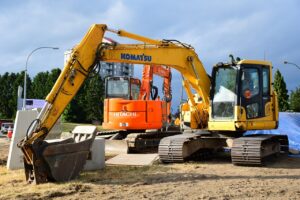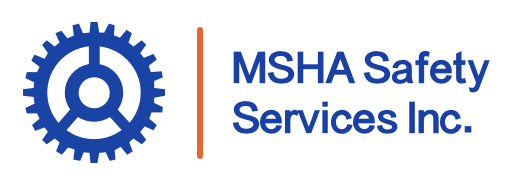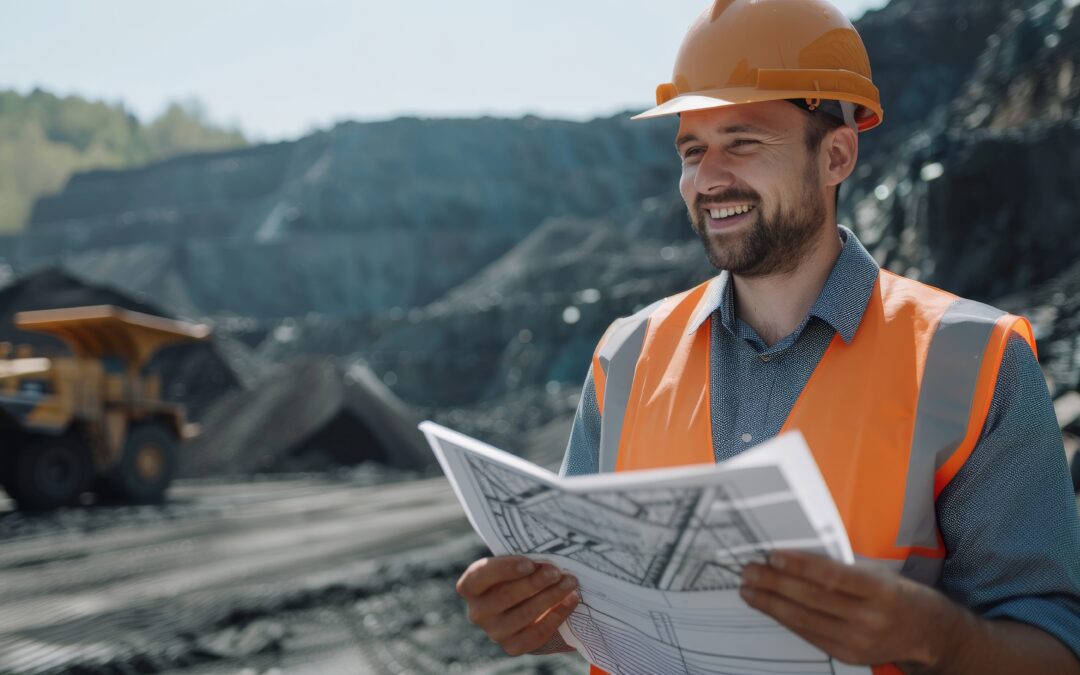Mining ranks among the world’s most dangerous industries, making workplace safety essential, not optional. The Mine Safety and Health Administration (MSHA) helps reduce risks through strict training and safety enforcement. MSHA ensures miners, supervisors, and contractors learn to spot hazards, respond correctly, and follow safety protocols. Effective MSHA training does more than meet compliance—it actively protects lives in extremely hazardous conditions.
The Role of MSHA in Mining Safety: Standards, Inspections, and Enforcement
The role of MSHA in mining safety is central to protecting workers and ensuring that mine operations across the U.S. adhere to strict safety standards. Since its formation in 1977, the Mine Safety and Health Administration (MSHA) has acted as the cornerstone of mining safety regulation, focusing on standards, inspections, and enforcement to reduce workplace injuries, illnesses, and fatalities.
MSHA improves mining safety by creating and enforcing federal standards for equipment, ventilation, training, and emergency planning. The agency conducts regular inspections and audits to identify hazards and ensure full compliance with safety rules. Inspectors issue citations and penalties when they find violations during their evaluations. This consistent oversight highlights the value of safety protocols and helps prevent malfunctions, chemical exposure, and ground collapses.
Ultimately, the role of MSHA in mining safety is not only regulatory but also educational. By providing guidance and training materials, MSHA empowers mine operators and workers to create safer environments. Without MSHA’s rigorous enforcement and comprehensive safety standards, the risks associated with mining would be exponentially greater for everyone involved.
MSHA Part 46 vs. Part 48: What’s the Difference?
Not all mining sites are subject to the same training standards. MSHA defines two major categories: Part 46 and Part 48. Part 46 applies to surface miners working in sand, gravel, stone, cement, and similar nonmetallic operations. On the other hand, Part 48 governs training for miners in underground environments, as well as those working on the surface at underground mines — typically in coal or metal mining.
Knowing which part applies to your operation is crucial. It ensures that your team receives the correct training tailored to the unique risks of your site, whether that means navigating confined underground spaces or managing heavy equipment in surface operations.
Who Needs MSHA Certification?
MSHA certification isn’t just for full-time miners. Anyone who sets foot on an active mine site — whether they’re employees, supervisors, contractors, or even delivery personnel — must be properly trained. This broad requirement ensures that everyone on-site understands the hazards they may encounter and is prepared to act quickly and safely in case of an emergency.
Even short-term contractors or vendors cannot bypass this training, reinforcing MSHA’s commitment to a zero-exception safety culture.
Key Components of Effective MSHA Training Programs
High-quality MSHA training isn’t just about reading manuals or watching videos — it’s about preparing people for the reality of mining hazards. Effective programs cover everything from hazard recognition and emergency evacuation procedures to equipment operation, PPE protocols, and site-specific safety guidelines.
The most impactful training combines theoretical instruction with hands-on experience. Simulations and practical exercises help workers build the muscle memory and critical thinking needed to respond confidently in high-stress situations.
How Often Should You Renew MSHA Training?
Training isn’t a one-and-done task. MSHA requires annual refresher training to keep safety knowledge current and relevant. These sessions typically involve updates on new regulations, revisiting key hazard awareness topics, and practicing emergency response procedures.
Skipping or delaying this renewal not only risks noncompliance but also increases the chance of preventable accidents. Ongoing education is a key pillar of a strong safety culture.
MSHA Workplace Examinations: What Must Be Documented
Regular workplace examinations are required under MSHA regulations and play a role in preventing accidents. These inspections must be properly documented, including the date and location of the examination, any hazards identified, the corrective actions taken, and the name of the examiner.
Thorough documentation not only demonstrates compliance but also builds a record that can help identify recurring issues and improve long-term safety management strategies.
How MSHA Training Reduces On-Site Hazards and Fatalities
The connection between training and safety outcomes is clear. Workers who receive comprehensive MSHA instruction are better equipped to spot early warning signs of trouble — whether it’s a misaligned conveyor belt, unstable highwall, or chemical storage issue.
When training is taken seriously, sites report fewer equipment-related injuries, reduced risk of slope or highwall failures, and safer handling of explosives and hazardous materials. The ripple effect includes not only fewer accidents but also improved productivity, reduced downtime, and a more confident workforce.
Mining Accidents That Could Have Been Prevented — and MSHA’s Role in Investigations
Unfortunately, many mining accidents share a common thread: preventable errors or overlooked hazards. Incidents involving roof collapses, equipment rollovers, or fatal slips often result from inadequate training or safety oversight.
When these tragedies occur, MSHA steps in to investigate the root causes and publishes reports that offer valuable lessons for the entire industry. These findings inform new safety protocols and encourage more rigorous compliance, helping to prevent similar events in the future.
Common Misconceptions About MSHA Training
Despite its importance, MSHA training is often misunderstood. One common myth is that it’s only required for miners, when in reality, anyone entering a mine site — including contractors and vendors — must be certified. Another misconception is that online training alone is enough. While digital courses are helpful, most MSHA-compliant programs also require hands-on training to ensure practical competency.
Perhaps the most dangerous myth is that certification is permanent. MSHA mandates annual retraining to keep workers up to date with evolving regulations and site-specific hazards.
Modes of MSHA Training: Online vs. In-Person
Modern training programs offer flexibility, with both online and in-person options available. Online training is great for self-paced learning and convenience, especially for theory-based material. In-person instruction is often essential for drills, equipment use, and emergency response scenarios.
Many operators choose a hybrid approach — starting with online modules and completing the program with instructor-led exercises — to get the best of both worlds.
Choosing the Right MSHA Training Provider: What to Look For
Not all training providers are created equal. Look for organizations that offer MSHA-accredited programs taught by trainers with real-world mining experience. Up-to-date materials, hands-on learning opportunities, and a strong focus on current regulations are also important.
A reputable provider can make a big difference in how well your team retains safety knowledge and applies it in the field. The right training partner reduces compliance risks and helps reinforce a culture of accountability.

Why MSHA Safety Services Is the Ideal MSHA Training Provider
MSHA Safety Services is your go-to partner for comprehensive, MSHA‑approved training solutions.
Engaging, Expert-Led Training
MSHA Safety Services delivers MSHA Part 46 and Part 48 courses—ranging from New Miner (24–32 hr) to 8‑hr Annual Refresher training—through highly engaging methods. Our MSHA Blue Card–certified instructors bring real mining experience to every session, making safety education more interactive, memorable, and effective.
Flexible Delivery, Real-Time Support
Whether your team needs online flexibility or hands-on on-site instruction, MSHA Safety Services adapts. They offer:
- Online courses with interactive webinar sessions, flexible scheduling, and administrative support.
- On-site training tailored to your specific mine operations with real-time Q&A and immersive engagement.
Beyond Training: A Full-Service Safety Partner
MSHA Safety Services goes well beyond basic courses. Our support offerings include:
- Facility audits—on-site evaluations with actionable safety recommendations to reduce future citations and improve compliance.
- Mine project safety staffing—temporary or long-term access to MSHA-certified instructors and professionals to support your projects.
- Industrial hygiene services—expert guidance for dust, noise, HazCom protocols, and silica exposure compliance.
A Proven Approach to Safety Culture
By promoting interactive training, peer engagement (via online forums and webinars), and leadership involvement, MSHA Safety Services helps embed a safety-first mindset throughout mining organizations—leading to improved retention, safer environments, and stronger regulatory compliance.
The Bottom Line on MSHA Training and Mining Safety
MSHA training is more than a legal requirement — it’s an investment in workforce safety, operational efficiency, and long-term success. By prioritizing high-quality, consistent training across all levels of a mining operation, companies not only stay compliant but also build safer, more resilient teams.
When everyone on-site understands the risks and knows how to respond, the result is a stronger safety culture and a workplace where lives are protected every day.

